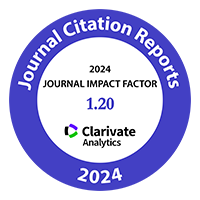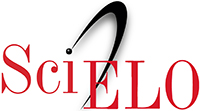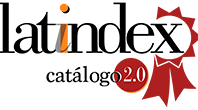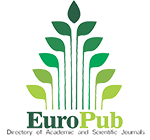Author Guidelines
Before submitting your manuscript, please read and follow instructions to prepare your manuscript. Manuscripts that not fit these instructions will not be considered for publication in the journal.
Authors’ Guidelines (Last update July 2025)
Revista FCA only publishes original research in the form of research papers, scientific notes, and review articles.
- Research papers are the result of theoretical, experimental or field-based scientific research that makes a significant contribution to advancing knowledge. They must not exceed sixteen pages.
- Scientific notes must not exceed eight pages and must be original works, the results of which (even partial) must be communicated immediately. This category includes descriptions of new species and cultivars, as well as plagues, diseases and methodological adjustments.
- Review articles are by invitation only from the Editor-in-Chief. These articles will be written by leading specialists in the fields covered by the journal and must not exceed twenty pages.
1. MANUSCRIPT SUBMISSION
1.1. Manuscript Structure
For the initial submission, the following files must be uploaded:
- Manuscript file: the text format must be done in MS-Word, A4 page size, double space, with Cambria typography, body 10 (data from: figures, tables and maps must be written with equal typography). The lines should be listed in the left margin and the numbered pages above and to the right.
- Cover letter: in PDF format. It should present a short summary of the work highlighting the main findings and the importance of the study. In addition, please provide a list of preferred (3-5) and non-preferred reviewers along with their affiliation and emails.
- Supplementary material in any format can also be provided, but is not mandatory. Authors are responsible for the format of the supplementary material.
Language: Manuscripts must be written in clear Scientific English. For an accurate evaluation, the writing must meet sufficient quality. Please check carefully our language guidelines which cover usual mistakes when writing scientific texts.
For further assistance in language editing services, please visit the following link.
1.2. Manuscript Structure
- Title: in English and Spanish no longer than twenty words each. A short title (up to eight words) is also required
- Authors: Only human beings can be listed as authors. An Artificial Intelligence (AI) may never be considered as an author of a scientific work published in this journal.
Authors must not be listed in the file of the manuscript. Authors’ full name, ORCID, affiliation, postal and e-mail address must be uploaded to the metadata of the system during the submission. Please check our Authorship and Copyright policy. - Abstract: in English and Spanish, no longer than two hundred words each. It must state precisely and briefly the purpose of the research, methodology, results and conclusions. It must not include background information, figures, tables or references.
- Keywords: up to seven in English and Spanish. Consulting a specific thesaurus is recommended.
- Introduction: include a synthetic updated revision of the topic knowledge with specific references to support it, establishing the aspects which have not been solved yet. The objective as well as the hypothesis must be specified to enhance the conceptual clarity of the work.
- Materials and Methods: provide enough detail of experimental design as well as the sampling and statistical method, to allow other scientists to replicate the research.
- Results: They must be expressed clearly and precisely, using charts, tables, graphs, and figures, highlighting the most relevant aspects of the work.
- Discussion: In results interpretation special emphasis must be placed in agreements and disagreements with the theoretical framework. This section can be written separately or with the Results as a unit.
- Conclusions: They must be short and show findings, solutions and/or concrete applications and uses. They must agree with the objective and hypothesis of the work.
- References: all the must follow APA 7th Edition
- Acknowledgements: A brief and precise mention of each person or institution worth of acknowledgement can be included.
- Authors’ contributions: must not appear in the file of the manuscript. Authors’ contributions must be uploaded to the metadata of the system during the submission describing the role of each author using the Contributor Roles Taxonomy (CRediT taxonomy).
- Funding statement: must not appear in the file of the manuscript. The funding statement providing the names of the funding institutions and their URLs, as well as the grant identification number(s), together with the initials of the authors that received the grant(s) must be uploaded to the metadata of the system during the initial submission.
1.3. Tables, Figures and Maps
- Tables: the title in English and Spanish must be placed on top of the table. Each one will be self-explanatory, e., it will not be necessary to read the article to understand them. The information shown in tables must not be repeated in figures. Tables can only include data developed into the article. File format must be MS-Word (doc/docx), not as an image. Each field or data must be separated with tabs and never with space bar. If there were footnotes, they should be written in English and Spanish. The use of colour is recommended.
- Figures: the title in English and Spanish must be placed below them. If there were footnotes, they must be in English and Spanish. They must be self-explanatory and the information from the tables shall not be repeated in the figures. Pictures: can only be included if they provide information which clarifies the content of the article.
Figures and images must be submitted as TIF, PNG, or JPG files with a resolution of at least 300 dpi (in separate files), in color, and with the font style: CAMBRIA. The names of the axes must be in "bold"; all other data must be in "regular" type; and only scientific names must be in "italics". - Maps: They must only be included if they provide essential information to understand the article. Maps from Argentina must follow the rules of Instituto Geográfico Nacional IGN (National Geographic Institute).
1.4. Reporting the use of Artificial Intelligence (AI)
Authors must disclose whether they used artificial intelligence (AI)-assisted technologies (such as Large Language Models [LLMs], chatbots, or image creators) in the production of submitted work. Authors who use such technology should describe, in the manuscript file in the appropriate section if applicable, how they used it. For example, if AI was used for writing assistance, describe this in the acknowledgment section. If AI was used for data collection, analysis, or figure generation, authors should describe this use in the materials and methods sections.
Chatbots (such as ChatGPT, Gemini, etc.) must not be listed as authors because they cannot be responsible for the accuracy, integrity, and originality of the work, and these responsibilities are required for authorship (please check the journal Authorship and Copyright policies). Therefore, humans are responsible for any submitted material that included the use of AI-assisted technologies. Authors should carefully review and edit the result because AI can generate authoritative-sounding output that can be incorrect, incomplete, or biased. Authors should be able to assert that there is no plagiarism in their paper, including in text and images produced by the AI. Humans must ensure there is appropriate attribution of all quoted material, including full citations.
For further details on how to report the use of IA, please check our journal policies and follow instructions stated in the “Guide for the use and Reporting of Artificial Intelligence in Scientific-Academic Journals”.
1.5. Additional considerations
The complete scientific names of any species must be mentioned the first time used. Thereafter they can be abbreviated as the first letter of the genus and the specific epithet without adding the authority. When first mentioned, the common name must be together with the scientific name.
Latin expressions must be written in italics (e.g., et al., in vitro).
Chemical symbols can be used in the text (e.g., N for nitrogen) but only names of chemical formulas (e.g., water and not H2O). Abbreviations of common use such as ATP, DNA etc. can be utilized.
When mentioning quantities, they have to be stated in letters from zero to nine except when they are with measurement units or higher numbers are included (e.g., 2, 7 and 25 samples). Decimals are stated with a point.
Equations can be inserted using the equation editor anywhere in the body of the article.
To verify that all the requirements previously stated have been fulfilled, we recommend authors to check the control list.
2. SUBMISSION OF A REVISED MANUSCRIPT
The deadline for submission of a revised manuscript will be indicated. Authors should highlight any modifications they have made to the original version and submit the following files:
- Revised Manuscript: a MS-WORD file with tracked changes (mark-up copy).
- Manuscript: a MS-WORD file without tracked changes (clean copy).
- Response letter: addressing the points made by the Associate Editors and Reviewers and indicating the modifications they have made in the revised manuscript file. Highlighting the line numbers of the original file version where the modifications were made is highly recommended.












.jpg)




